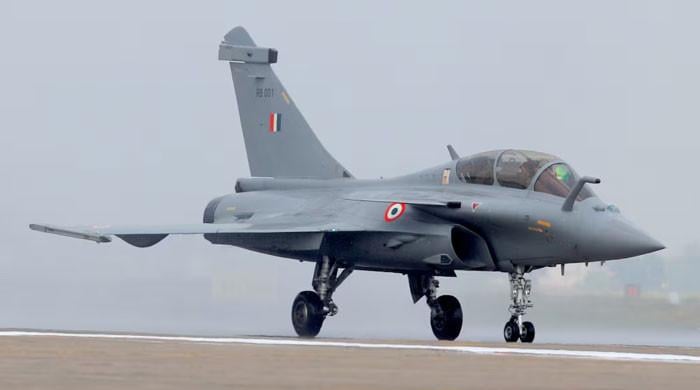Air Battle Unveiled: Pakistan’s PL-15 Missile Range and India’s Intelligence Gap
In the early hours of May 7, a high-stakes aerial confrontation unfolded as the Pakistan Air Force (PAF) detected numerous active Indian aircraft approaching the border. This occurred amidst heightened tensions following an attack in Indian Kashmir, which New Delhi attributed to Islamabad-backed militants, a claim Pakistan refuted.
Air Chief Marshal Zaheer Sidhu had been stationed near the PAF operations room, anticipating a potential Indian response. The situation escalated when India launched air strikes on Pakistan, prompting Air Chief Marshal Sidhu to deploy Pakistan’s J-10C jets.
A PAF official recounted that the Air Chief specifically directed his team to target the Rafale, a prized French-made fighter jet integral to India’s air power. This aerial engagement involved approximately 110 aircraft, marking it as one of the most significant air battles in recent decades.
Key Details of the Air Engagement
- The aerial confrontation involved approximately 110 aircraft.
- Pakistan’s J-10s reportedly downed at least one Rafale fighter jet.
- Faulty intelligence regarding the range of China’s PL-15 missile was a critical factor.
Reports suggest that J-10s successfully shot down at least one Rafale, leading to market fluctuations for Dassault, the Rafale manufacturer. Indonesia has also reportedly considered purchasing J-10s, potentially bolstering China’s international aircraft sales.
Interviews with officials from both India and Pakistan revealed that a crucial factor in the downing of the Rafale was an Indian intelligence failure concerning the range of the PL-15 missile, jointly operated by China and Pakistan.
Indian officials stated that Rafale pilots operated under the incorrect assumption that they were beyond the PL-15’s range, which they believed to be around 150 km. A PAF official indicated that they had strategically ambushed the Indian aircraft, employing electronic warfare tactics to disorient Indian pilots.
Expert Opinions
Justin Bronk, an air warfare expert at RUSI, highlighted that the PL-15 demonstrated significant long-range capabilities. Pakistani officials confirmed that the missile was launched from approximately 200km away, potentially setting a record for long-range air-to-air strikes.
While India’s defense and foreign ministries did not respond to requests for comments, France’s air chief suggested he had seen indications of the loss of a Rafale and other aircraft flown by India. Similarly, a Dassault executive acknowledged the loss of a Rafale during operations.
Technological and Strategic Aspects
The engagement highlighted Pakistan’s effective integration of military hardware and surveillance, creating a clearer battlefield picture. This included a network that linked air, land, and space sensors, incorporating the Pakistani-developed Data Link 17 system.
This system enabled J-10s to receive radar feeds from surveillance aircraft, allowing them to operate undetected. Indian officials acknowledged their efforts to establish a similar network but noted complexities due to their diverse sources of aircraft.
Ret. UK Air Marshal Greg Bagwell emphasized the importance of situational awareness, stating, “The winner in this was the side that had the best situational awareness.”
Following India’s strikes on Pakistani targets, Air Chief Marshal Sidhu shifted PAF squadrons to attack mode. Pakistani officials noted that India deployed approximately 70 planes, creating a target-rich environment for the PL-15s.
Bagwell noted that the May 7 battle was a significant instance of modern aerial warfare involving strikes beyond visual range. Pakistani officials also claimed electronic assaults on Indian systems reduced the situational awareness of Rafale pilots, though Indian officials disputed these claims.
In the aftermath, Indian officials have alluded to political constraints affecting the air force’s operational orders. Additionally, India’s deputy army chief accused Pakistan of receiving real-time inputs from China during the battles, an allegation denied by Islamabad.
China’s Foreign Ministry maintained that its military partnership with Pakistan is part of normal cooperation and doesn’t target any third party.



Comments (0)
No comments yet. Be the first to comment!
Leave a Comment